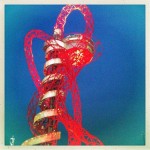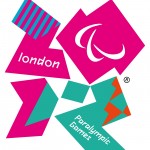Sacro-Iliac, also known as SI, Joint pain
The Sacro-Iliac joint is a common cause of lower back pain due to the large amount of force it has to cope with, patients often get this joint confused with the hip as it is quite low and slightly to the side of the spine (wider in women).

This joint connects the spine to the pelvis and takes on a lot of force during motions involving the legs and torso. The joint essentially is a wedge of bone (The Sacrum) at the base of the spine fitting into wedge shaped region (between the ‘Ilia’, pleural of the ilium which is one of three parts of the pelvis) at the pelvis hence the name Sacro-iliac. Because this joint takes on so much force it requires a lot of stabilising, hence there are many ligaments connecting the sacrum to the surrounding structures. These ligaments are prone to injury, if the muscles around the joint, above or below are not working efficiently to support the spine then the S.I joint’s ligaments and cartilage are prone to increased forces and therefore damage.
Front view:
 Rear view:
Rear view:

Pain that originally starts in this region often spreads across the whole of the lower back, this is because inflammation is a very clever but also very crude system. When the inflammatory process starts, it essentially dumps inflammatory chemicals on a region. What it often does however is go a bit too far, this can actually damage healthy cells, giving the feeling of pain in a general region. The S.I. joint can also refer pain to various other regions, this is because where the pain fibers from the S.I joint enter the spine, fibers often cross with fibers that innervate other regions of skin of the body, therefore producing pain at the region also. When this occurs, it is known as an S.I. joint Syndrome as all three components of pain, restriction and pain referral are involved to make up the ‘syndrome’.
Purely using an Ice pack regularly for 10-15 minutes every 2 hours for a week will make a massive difference and should localise the pain back to the joint where it originated. To clear out the rest and to prevent recurrence, a Chiropractor may be needed to get the joints moving properly and the muscles loosened and functioning correctly once more. There is only around 2-4 millimeters of movement at the joint therefore a Chiropractor will help regain as much movement as possible. This will get rid of the pain completely and with the correct assessment and treatment of your bio-mechanics and function it will prevent the problem from recurring in the future.
There are more serious conditions that can affect this joint such as various arthropathies, (there are many types of arthritis) though a well trained Chiropractor should be able to determine the exact cause of the pain from your history and assessment.










